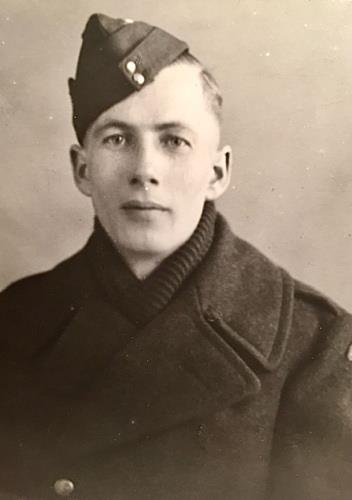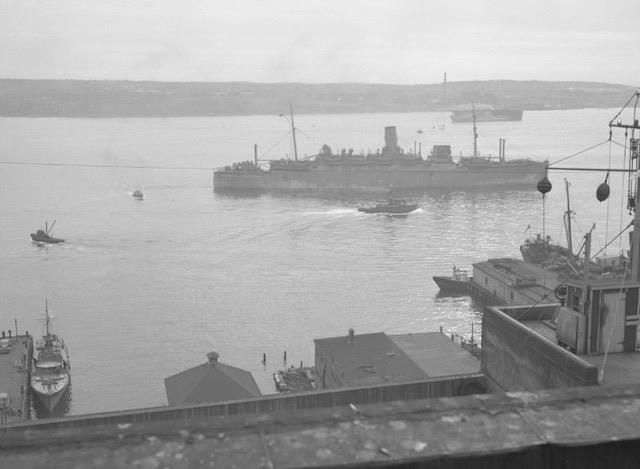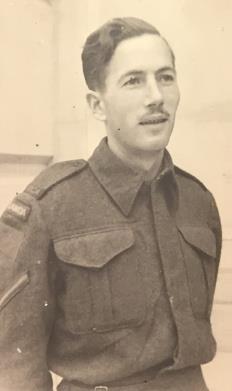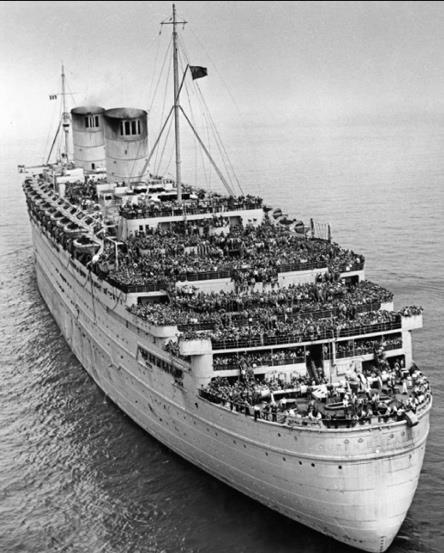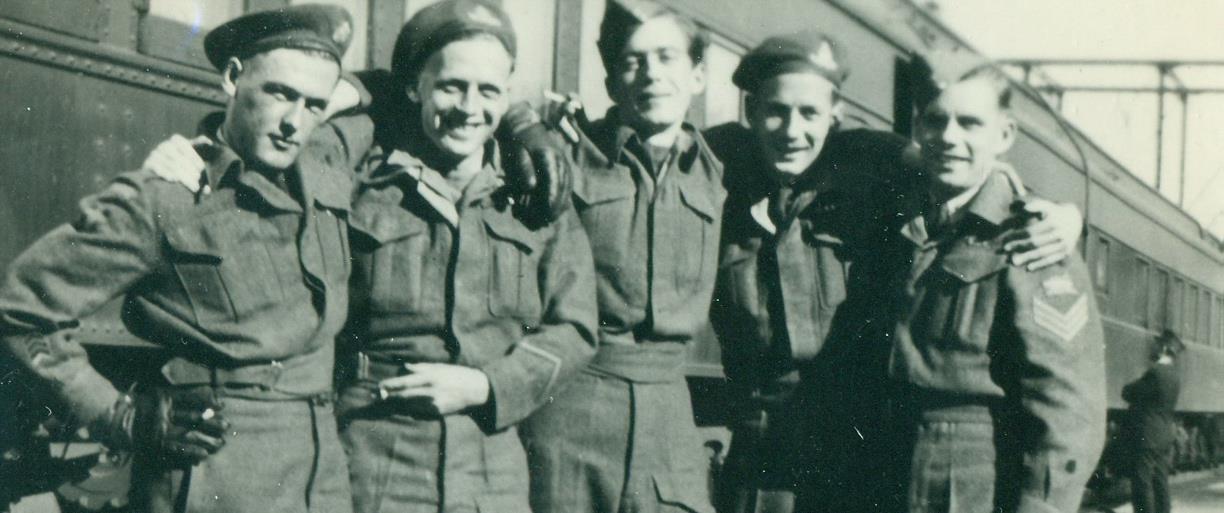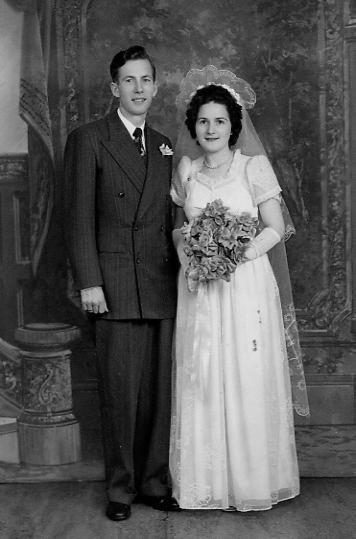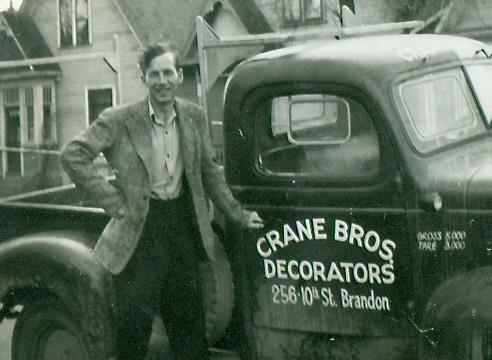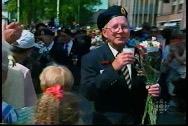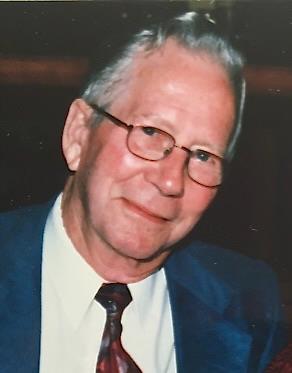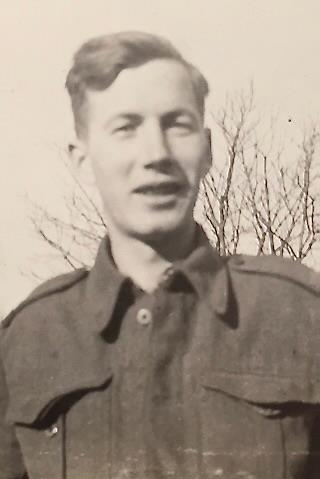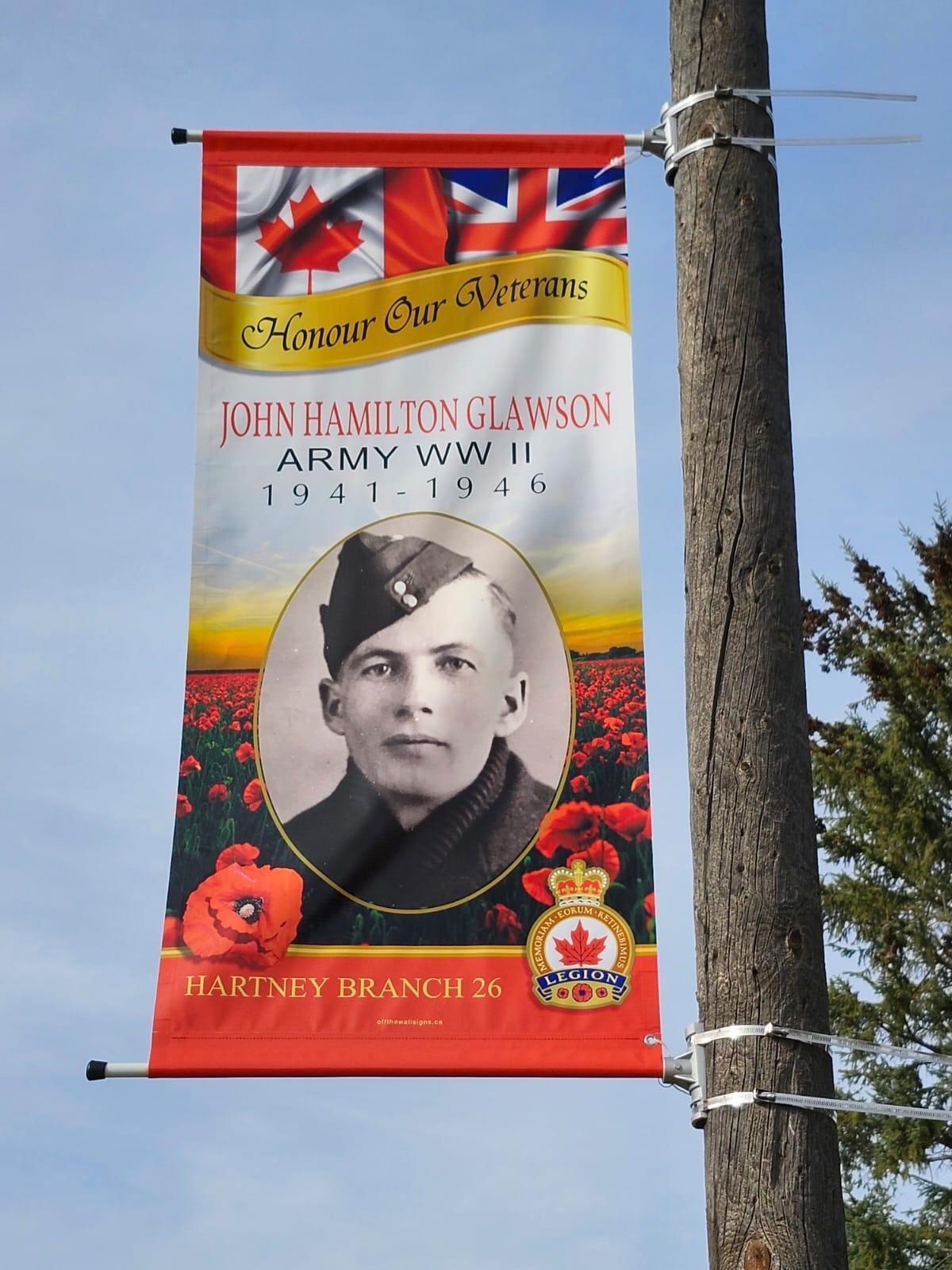Wall of Service
Column
27
Row
13
John Hamilton Glawson
26 May 1923 – 2 August 2003
Member of Hartney Branch #26 & Brandon Branch #3, Royal Canadian Legion
Rank: Bombardier, Royal Canadian Artillery
Canadian Army: Nov 19, 1941 – Jan 19, 1946:
B Troop, 19th Battery, 3rd Field Regiment, 2nd Brigade, 1st Division, 1st Corp Canadian Army
Serving in: Canada, United Kingdom, Central Mediterranean Area, and Continental Europe
Medals: 1939–45 Star: Italy Star, France & Germany Star, Canadian Volunteer Service Medal, Defence Medal, War Medal 1939 – 45
John (“Jack”) Hamilton Glawson was born on May 26, 1923, near Hartney, Manitoba on a farm north of Argue, which was just a grain elevator on the CN railway between Hartney and Elgin.
Jack was the son of Hailey Glawson (1888 – 1932) who was born in Spry Bay, Nova Scotia and Christina Forbes (née Caldwell, 1892 –1982) who was born in Dunbartonshire, Scotland.
Jack was the brother of Harvey (1917 – 2012), Ted (1921 – 1997), George (1925 – 1963), Chris (1929 – 1983) and sister Bette (born in 1931).
During the depression, the family moved to a “soddy” (a small home constructed with sod blocks, twigs, thin branches and hay) built by his father, Hailey at Oak Lake. After his dad’s sudden death when Jack was only 8 years old, his mother Christina and siblings moved to Hartney.
To help with family expenses, Jack spent some time herding cattle, delivering newspapers, and working on the Gibson farm during school holidays. He also worked at McDowells’ store in Hartney delivering groceries. After Jack left school in 1941, he worked as a waiter in the sergeants’ mess at Rivers air base.
The War Years
On Nov 19, 1941, at age 18 with his brother Harvey, Jack enlisted in the Canadian Artillery, like their brother Ted the year before.
His basic army training took place at Fort Osbourne Barracks in Winnipeg, with advanced training at University of Manitoba and at Shilo, Manitoba.
In late spring 1942, Jack departed Shilo by train to Halifax. He thought this would be an opportunity to see the area where his dad came from. But instead, they went right to the dock. On the following day, June 16, 1942, Jack departed from Pier 21 in Halifax to Glasgow on the Letitia, a cargo ship. Jack said, “I was sick about one hour at sea and remained sick until arriving in Scotland.”
Additional training followed at Camp Borden in Kent, England. Jack said, “My job was in the command post of the troop or battery, where we figured out the line and range for the guns. This was passed on to the gunners who set the guns to hit enemy troops and equipment.”
In 1943 Jack sailed to Sicily, although the soldiers did not know their destination until they got there. Fighting in Sicily lasted about a month, and then he crossed the Straits of Messina, landing at Reggio Calabria, the most southern point on the mainland of Italy.
It was “very slow fighting,” as they made their way north in Italy. Arriving just south of Ortona in December 1943, Jack got together with his brother Ted, who was stationed nearby.
Jack remembered Christmas Eve 1943 near Ortona, “The weather was so bad that when we came off duty and went to get into my bed under a pup tent, it was full of water as we slept in slit trenches. I took a pole and fished out my blankets and spent the rest of the night in the cab of one of our trucks.”
By February 1944, he was situated in northern Italy near Pisa, waiting to be moved to Holland. They were loaded onto an American landing craft at the Italian port city known in English as Leghorn (Livorno) and was taken across to Nice, France. Jack said he “saw France from the back of a truck.”
In April 1945 Jack arrived in Holland and was active there for about three months until the war ended on June 5, 1945. Jack said, “When we received word that the war was over, we were so tired that we just went to sleep.”
After the end of the war, Jack was given leave to visit his mother’s sister, his aunt Annie Rankin Caldwell (1874 – 1952) near Glasgow Scotland, and then ended up back at Camp Borden in Kent.
Jack was asked to be on a war bond drive back in Canada. This gave him a chance to get home quicker, otherwise soldiers were drafted for home according to the time they had been away.
On October 9, 1945, Jack, as one of about only sixty “special Canadian troops,” arrived in New York City on RMS Queen Elizabeth. They docked at Pier 90 with about 15,000 American troops on board. Jack, who didn’t get seasick on the return trip said, “Sailing into New York was quite an experience, as there were tugboats along the way with bands on them, and then we passed the Statue of Liberty and into the harbour. Quite a performance.”
Jack arrived in Canada by train to Montreal, and he met his mom and family in Brandon for a couple of days, prior to his departure to British Columbia for the war bond drive.
Jack was part of a team of soldiers who flew a barrage balloon across Canada for the Victory Bond/War Bond drive to raise funds to help pay for the war effort. The barrage balloon, attached by a cable, was used during the war to prevent low level air attacks by the Germans.
At age 22, Jack was discharged from the service “to return to civil life on demobilization” on January 19, 1946.
His wife Vera
In fall 1945, in uniform on leave from the war bond drive in BC, Jack attended a dance where he met Vera Clark (1922 – 2021), who was teaching at the school in Hartney. They were married in the Beaconsfield District on July 26, 1947 and settled in Brandon. Jack built a home there with help from the Veterans Land Act in 1955.
His family
Jack and Vera’s daughter Lydia was born in Brandon, followed by their son Bruce. Jack and Vera also had three grandchildren, Erin, Julie and Steven (the children of Lydia).
His work life
In 1946, Jack became an apprentice with Crane Bros. painting contractors in Brandon.
The following year he worked as a painter with Crane Bros. in the summer and in Shilo, Manitoba during the winter months.
In 1959 Jack bought Crane Bros. and eventually changed the business name to Glawson Painting and Decorating Ltd. Jack was well respected in the business community.
In 1994 he was presented with the Ben Wiebe Memorial award for his outstanding contribution to his profession and to his community by the Brandon Builders Exchange. Jack was an active member of St Paul's, Central and Knox United Churches, Toastmasters, and the Masonic Lodge.
Retirement
In 1983, at age 59, Jack retired. He described these years as “the best time of my life.”
In 1995, at age 72, Jack and his wife Vera returned to Holland on the 50th anniversary of VE-day and were overwhelmed and humbled by the gratitude shown by the Dutch people to their Canadian liberators.
Jack at age 80, died on August 2, 2003, in Brandon, Manitoba after facing an illness with courage and dignity. Jack was interred in the Hartney Riverside Cemetery with his other family members.
